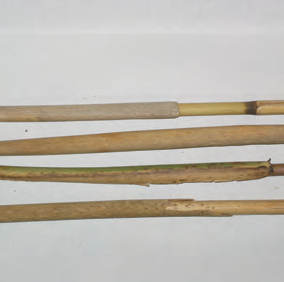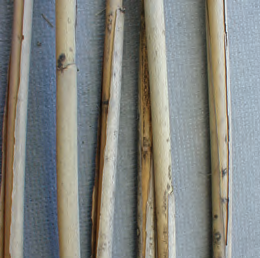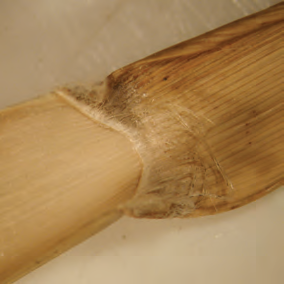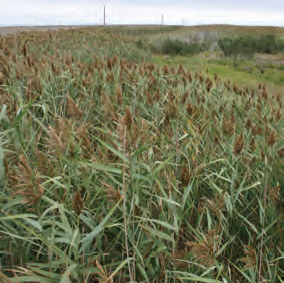Invasive Phragmites
Phragmites australis ssp. australis
Grass Family (Poaceae)
Perennial Grass
Flowers: Jun–Sep
Native Range: Cosmopolitan (our genotypes originating in Europe)
Introduction: to the Atlantic coast in the late 1700s or early 1800s, possibly in ship ballast.
Mid-Atlantic Range & Habitats: Tidal and non-tidal wetlands (brackish and freshwater), marshes, river edges, disturbed ground, roadsides.


The highly aggressive subspecies of Phragmites invading wetlands along the Atlantic coast is of Old World origin. This invasive lineage has displaced the native subspecies inmany locations and has spread beyond the original native range of the species, invading habitats that never harbored native Phragmites. The invasive subspecies typically forms dense, monotypic stands that completely exclude other wetland vegetation. This loss of structural and floristic diversity can adversely affect wildlife, including waterfowl and many marsh bird species, fish, and invertebrates.

Quick ID
- Stem color: Typically all green with yellowish nodes (but some lower nodes may be maroon). Stem texture is slightly ridged and color is dull (not shiny)
- eaf sheaths of overwintering plants: Sheaths do not easily fall off the stem when pulled (most still present on plant)
- Ligule height: Ligule 0.4–0.9 mm
- Glume length: Upper (distal) glumes mostly <6.0 mm (4.5–7.5) Lower (proximal) glumes mostly <4.0 mm (2.5–5.0)
More ID Tips
Invasive Phragmites typically has somewhat glaucous, blue-green leaves, while the leaves of Native Phragmites are often lighter yellow-green. This color difference may be noticeable when the two species are growing together, but keep in mind that color can be variable and a closer examination is needed to confirm the identification. The native subspecies sometimes has small black spots on the stem internodes caused by a fungal infection. The invasive does not seem to be affected by the fungus, so if these dots are present, they are a good indication that the plant is of the native subspecies. Absence of fungal dots is inconclusive.


